Results 1,931 to 1,940 of 12091
Thread: Anandtech News
-
06-04-12, 02:00 PM #1931
Anandtech: Verizon, T-Mobile, Sprint, and US Cellular Announce More Galaxy S III Deta
This morning, Verizon started something of a firestorm when it posted pricing and preorder information about the Samsung Galaxy S III (SGS3) on its website, with T-Mobile, Sprint, and US Cellular all following suit shortly after. This comes just after Samsung announced that the SGS3 would be arriving with the same screen size (4.8"), SoC, and RAM at all five carriers in the US late last night, which we made note of.
Based on the information from each carrier’s respective announcement, I’ve put together a simple table rather than regurgitate everything in text form. AT&T hasn’t made its preorder pricing or date announcement yet, but such an announcement seems imminent considering their coming soon page is already live.
Thus far, it looks like Samsung has done a good job ensuring consistent US hardware (all five variants are Snapdragon S4) and, based on what dates the carriers have provided, launch dates all in the same neighborhood.Samsung Galaxy S III - USA Carrier Variants Carrier Verizon Wireless T-Mobile Sprint US Cellular AT&T Capacities / Pricing 16 GB / $199.99
32 GB / $249.99None Given 16 GB / $199.99
32 GB / $249.99None Given ? Purchase / Preorder Date Preorder: June 6, 7 AM ET Purchase: June 21 Preorder: June 5
Purchase: June 21Preorder: June 12
Microsite: June 5? Preorder / Info Page Link Link Link Link Link Press Release Link Link Link Link ? SoC / RAM 1.5 GHz Snapdragon S4 (MSM8960/8260A) / 2 GB LPDDR2
Gallery: Samsung Galaxy S III Coming To 5 US Carriers In June





More...
-
06-04-12, 02:00 PM #1932
Anandtech: Microsoft Announces Xbox SmartGlass Service For Windows 8, Windows Phone
While we’ll leave most of the E3 gaming announcements today to the gaming press, there is one bit of news that has come out of E3 that’s going to be relevant for Windows users.
As previously rumored, Microsoft used E3 to announce their SmartGlass companion service for Xbox. If you’ve played around with Windows 8 or Windows Phone 7 then you’ve already seen pieces of this, as SmartGlass is the functional successor to Microsoft’s Xbox Companion application – and in all likelihood built upon Companion too.
Xbox SmartGlass effectively extends what Companion could already do by not just giving client devices the ability to control the Xbox 360 – a function that will be increasingly important as SmartGlass devices will be the controls for Internet Explorer on the Xbox 360 – but also access to some forms of Xbox content. On the content consumption side Microsoft is currently pitching it as a way to watch movies and videos. And while it isn’t made explicit in their demo or press releases it looks like this is limited to content from the Xbox Live service, making it something closer to synchronized media playback devices than something pushing content around like DLNA or Apple’s AirPlay.
Gallery: Xbox SmartGlass





As for the gaming side of things, Microsoft is pitching SmartGlass as a way to use tablets and phones as a secondary touchscreen display for gaming purposes, à la the touchscreen-equipped Wii U Gamepad. Again Microsoft is being brief on their details here, and it’s not clear whether these are operating as independent devices or playing back a video stream from the console (Wii U), though we suspect the former based on how resource starved the Xbox 360 is even without the workload of SmartGlass. In which case however this also means gaming is going to be limited by tablet capabilities, especially if SmartGlass is supported on the ARM-based WinRT as is almost certainly the case.
In any case, Microsoft quickly showed mockups of both scenarios in action on an unnamed Windows 8 tablet. At this point in time only Windows 8 and Windows Phone are specifically mentioned as supported platforms, however Microsoft also says “other portable devices” in their press release, which can be taken to be either WinRT or possibly 3rd party devices. Microsoft hasn’t announced a specific date for the service, but given the reliance on Windows 8 it’s certainly no sooner than later this fall.
More...
-
06-04-12, 05:00 PM #1933
Anandtech: Toshiba Announces THNSNF Series SSDs: 19nm NAND Is Here
Toshiba announced their THNSNF SSD series today. The announcement was long overdue as currently Toshiba's fastest SATA offering is the HG3 series, which was released in January 2010. The name of the new series is certainly not the most user friendly but it should be kept in mind that so far Toshiba has only sold their SSDs to OEMs, so the naming is not that important.
THNSNF will finally bring SATA 6Gb/s support to Toshiba SSDs, and the series is based on Toshiba's own controller. Toshiba has definitely taken their time developing this controller considering we saw the first SATA 6Gb/s SSDs (Crucial's RealSSD C300) in early-2010—over two years ago—and the first such SSDs hit retail (albeit with some growing pains) in February 2010. The actual model number of the controller is still unknown, but it's possible that it's the same controller (TC58NC5HJGSB-01) that surfaced in IO-Data's SSDs a couple of months ago. On the other hand, Toshiba is known for quality and reliability with their SSDs, so it's not that surprising that it took this long for them to test and validate a SATA 6Gb/s contoller—it can easily take over a year of validation to make sure everything works properly.
On top of the brand new controller, Toshiba is also using their own state of the art 19nm Toggle-Mode 2.0 MLC NAND. Some of Toshiba's 24nm NAND used Toggle-Mode 2.0 interface as well so it's not brand new, but at 400MB/s it's faster than what ONFi can provide at this point. Toshiba is in fact the first SSD company to announce SSDs based on sub-20nm NAND, though we should start seeing 64Gb 20nm IMFT NAND soon unless Intel and Micron have issues with the new process node. Here's the overview of the new Toshiba SSDs.
The 'xxx' in the model numbers represent the capacity of the drive, so a real model number would look like TNSNF256GBSS for a 256GB 2.5" 9.5mm THNSNF drive for example. In the light of performance, it seems that Toshiba's decision not to rush the controller has resulted in good returns. Random write IOPS could be better but other specifications look very, very promising. 440MB/s sequential write for a 64GB SSD would make the THNSNF one of the fastest 64GB SSDs on the market.Toshiba THNSNF Series Specifications Model Number THNSNFxxxGBSS THNSNFxxxGCSS THNSNFxxxGMCS Form Factor 2.5" 9.5mm 2.5" 7mm mSATA Capacities 64GB, 128GB, 256GB, 512GB 64GB, 128GB, 256GB Sequential Read 524MB/s Sequential Write 461MB/s (440MB/s for 64GB) 4K Random Read 80K IOPS (50K IOPS for 64GB) 4K Random Write 35K IOPS (25K IOPS for 64GB)
Toshiba is also touting the THNSNF series as very power efficient and they claim a power consumption of less than 0.1W in the press release. The press release does not mention how the power consumption was tested but even for idle power consumption 0.1W is extremely low—so far the best we have tested is 0.27W. Utilizing smaller process node NAND obviously helps with power consumption, but Toshiba must have paid a lot attention to power consumption in their controller and firmware design as well.
Today Toshiba is only making a product announcement as the THNSNF series is not even in production yet. According to the press release, mass production will begin in August 2012 and hence availability should be later in 2012. Again, I would like to emphasize that Toshiba has only sold their SSDs to other OEMs, so it's likely that you won't see these drives in stores. However, another SSD OEM may buy and rebrand the THNSNF series, which is what Kingston did with their SSDNow V+100 series.
As a final thought, Apple is a huge OEM that has been getting most of their SSDs from Toshiba. All Macs except the MacBook Air come with Toshiba HG3 SSD if the buyer chooses to configure their Mac with an SSD. MacBook Air SSDs are sourced from both Toshiba and Samsung, mainly to avoid component shortage given the popularity of the MacBook Air, though our own testing revealed the Samsung-equipped MBA's offered better performance. The THNSNF series would be a logical upgrade path for Apple, though on the other hand the availability is later this year; Samsung has been shipping their 830 SSD series for nearly a year now. Now that mobile Ivy Bridge is out, we should see where Apple is going in matter of months, maybe even weeks. Either way, Macs are in need of SATA 6Gb/s SSDs and it's always possible that Apple will surprise us by going with a totally different brand. Or who knows, maybe they have developed something in the house after the Anobit acquisition?
More...
-
06-04-12, 05:00 PM #1934
Anandtech: SanDisk Releases Lightning PCIe SSDs for Enterprises
Computex is now running at full power and announcements are coming from everywhere. SanDisk just launched their latest addition to their enterprise SSD portfolio: the Lightning PCIe SSD. The drive is based on SanDisk's own controller; if you've been following the enterprise SSD news closely, you might remember that SanDisk acquired a controller firm called Pliant about a year ago, and the controller is a fruit of that acquisition.
The actual controller is not new, though, as it's the same controller used in SanDisk's Lightning 6Gb SAS SSDs. It's a SAS based controller so SanDisk is using a SAS to PCIe bridge, which unfortunately limits the performance in some degree. SanDisk mentioned that the controller provides a lot more processing power than most of the competing controllers, and the aim is to handle as many I/O functions as possible so that the CPU will be free for application processing. SanDisk wouldn't reveal the specifics of the controller but Greg Goelz, the vice president and general manager of SanDisk's enterprise storage solutions, told me that while most controller have a few processing cores, SanDisk's controller has "plenty more".
SanDisk is a rare SSD company in the sense that they can make everything in the house. Toshiba and SanDisk established a NAND joint venture in 2010, which means SanDisk makes their own NAND now as well. Thus it's not surprising that the Lightning PCIe SSD series is using SanDisk's brand new 24nm SLC NAND.
The performance figures may seem disappointing but they aren't the whole story. Greg Goelz specifically told me that SanDisk wanted to be conservative with the numbers and not provide absolute maximums like many other companies do. SanDisk's goal was not to create the fastest SSD on earth, but rather an SSD that does well in all workloads and capacities. The biggest goal was to create an SSD with predictable performance. This means the performance must be the same regardless of how full the drive is. Given the price of enterprise SSDs, you don't want to spend thousands of dollars per SSD and then realize that you can't use all of its capacity or your performance degrades. Especially when it comes to first class storage such as SSDs, this is important because the more data you can store in SSDs instead of HDDs, the better the performance will be.SanDisk Lightning PCIe SSD Specifications Model LP 206M LP 406M User Capacity 200GB 400GB Maximum Data Throughput 425MB/s Maximum IOPS 110K IOPS 4KB Random (70% read - 30% write) 23K IOPS 8KB Random (70% read - 30% write) 17K IOPS Price $1350 $2350 Warranty 5 years or maximum endurance used (10 full drive writes per day)
Another aspect that SanDisk emphasized was response times. Most companies only report their average response time, which actually doesn't tell you much. You can have an average response time of, for instance, 10ms, but the worst case response time can easily be over a second. SanDisk Lightning PCIe SSD has a maximum response time of 30ms, which is very low. Maximum response time is a crucial part of performance predictability as when you know the maximum response time, it's easier to sort out possible bottlenecks. Moreover, you will know that your SSD responds in a certain time regardless of the workload. Response times are often overlooked even though they can be the source of bottlenecks. Imagine that you're running a web server with an SSD that has a maximum response time of two seconds. When the user fetches data from the drive, most of the time the data might be readily available, but in certain cases it may take two seconds for the SSD to respond, plus the time it takes for the data to be read/written and transferred. Hence response time can have a huge impact on overall performance and shall not be ignored when configuring your system.
As for power requirements, the drive is powered by the PCIe slot and SanDisk is stating sub-15W power consumption even at full load. Power consumption actually plays a bigger role in the enterprise world than many would expect. Performance per watt is definitely one of the most important measures because when you have a system consisting of hundreds or even thousands of individual servers, all of which can have several PCIe SSDs, saving even 5W per drive can lead to massive savings over time. Low power consumption also means less heat, which makes the drive compatible with more systems. A higher power drive may need a certain amount of air flow to stay within safe temperatures and figuring out whether your system provides enough air flow may not be an easy job.
Operating system support is fairly broad as well since the Lightning PCIe SSD supports Windows, Linux and VMWare ESX environments. No additional configuration or software is needed; the drive is essentially plug and play. SanDisk mentioned availability as June in the US and Japan, and it will be available from major resellers such as NewEgg and TigerDirect. We are looking forward to reviewing the Lightning PCIe SSD series, so stay tuned!
More...
-
06-04-12, 06:00 PM #1935
Anandtech: Sony Goes Whole Hog With a New Ultrabook, Updates Vaio Notebook Line
It's not surprising with Computex on and hardware refreshes from the three major players (AMD, Intel, NVIDIA) that vendors have been updating their offerings. What is surprising is just how massive the updates Sony has lined up are, with no less than five new or refreshed lines to take a look at.
The big launch is Sony's first ultrabook proper. While the Z series we reviewed largely qualified as an ultrabook, the T series is the first Sony is actually calling an ultrabook. The T series is a 13.3" ultrabook built on a magnesium and brushed aluminum chassis, sporting Ivy Bridge ULV processors and offering either an SSD or a hybrid storage solution featuring mechanical storage with solid state caching via Intel's Smart Response Technology. Best of all, the T series is launching at a price point starting at just $799. Looks like Ivy Bridge will be bringing ultrabook prices down after all.
Next on the list, Sony is refreshing their E series with backlit keyboards in the 14" and 15.5" models along with updated AMD Radeon HD graphics. The 11" E series is listed as coming equipped with an AMD processor, so this is liable to be running either Brazos or the next generation Brazos refresh. Meanwhile, the 14" is still going to be using Sandy Bridge processors (liable to be confined to dual core) while the 15.5" will be available with both Sandy Bridge and Ivy Bridge processor options. And not to be outdone by HP and Dr. Dre's Beats Audio, Sony is releasing a Vaio E 14" model that is, I kid you not, called the "LL Cool J E 14P Series Boomdizzle Bundle," which includes collaborative music recording software and Sony MDR-V55 DJ style headphones. The 11" E series starts at $449, the 14" E series starts at $549 ($899 for the Boomdizzle Bundle), and the 15" E series starts at $449.
Sony is also updating their popular thin-and-light S series with magnesium shells and NVIDIA graphics featuring Optimus technology. Unfortunately details are pretty light with these 13.3" and 15.5" notebooks, but it looks like we'll be stuck with Sandy Bridge on the 13.3" while the 15.5" model will offer Ivy Bridge quad core processors. Interestingly, Sony also says both notebooks will have quad RAID 0 available, which looks like it may just be a progression from the pair of SSDs configured in RAID 0 in the last generation. What should really get your attention is the 1080p IPS panel that will be available in the 15.5" S series. It looks like with this coming generation, some of the vendors are finally starting to realize that consumers are tired of low quality screens on their laptops. The 13.3" S series starts at $899, while the 15.5" S series starts at $999.
The Z series is also seeing an update, and the standout seems to be that the new Z series will be available with Ivy Bridge quad core processors...in a 2.6 pound chassis. It probably stands to reason Intel's 35W Core i7-3612QM will be on tap, but the question is whether or not the thermals and noise will continue to be a problem with this one as they were in the Z2, where fan noise was driven up to a very high whine as a result of trying to keep a full 35W CPU cool. Once again, the Z series enjoys a dock (no mention of external graphics hardware this time) and sheet battery. In keeping with its predecessor's premium status, the refreshed Z series starts at a not inconsiderable $1,599.
And last but not least, Sony is updating their 24" all-in-one L series line with Ivy Bridge quad core processors and modern NVIDIA graphics hardware. In late summer 2012, they'll also be offering an L series with glasses-free 3D. The L series starts at $1,299.
All of these new machines are due to become available by the end of this month.
More...
-
06-04-12, 08:30 PM #1936
Anandtech: Computex 2012: New Efficient PSUs & LED Controller from NZXT
NZXT is also showing off its new line of 80 Plus Bronze certified PSUs, the HALE82 N (non-modular). The HALE82 supports up to 3.5A for 5V standby, enabling high current draw for charging smartphones/tablets from your PC while in standby mode. The PSUs feature white fan blades and a white PCB in addition to supporting the 2013 ErP Lot 6 spec for a max of 0.5W power draw in standby mode - unfortunately to meet this spec you'll also need motherboard support for it as well.
NZXT also showed us their new Hue RGB LED controller. Priced under $30 the Hue uses a SATA power connector to drive a single 2m long strip of LEDs. The LEDs can be configured to fade, switch or remain stuck at a single color. Three dials give you control over the final color.
Gallery: Computex 2012: New Efficient PSUs & LED Controller from NZXT





More...
-
06-04-12, 08:30 PM #1937
Anandtech: Computex 2012: NZXT's Cryo V60 & X60 Notebook Coolers
With features like configurable TDP with Ivy Bridge and more users moving to notebook-only usage models, finding new ways to add extra cooling to increasingly small form factor notebooks is important. NZXT introduced two new lap coolers at Computex, first up is the Cryo V60 which will be available in white and black for around $34 (pictured above).
There are two blower style fans inside the V60 that pull in air from the back of the plastic chassis and exhaust through a ring in the middle. There's a dial to adjust fan speed on the right side of the V60 as well as three USB charging ports. One port is used for powering the device (a cable comes with the unit), while the other two can be used to charge smartphones/tablets. You can't transmit data on these ports.
The V60 works pretty well, and the adjustable fan control lets you make it as quiet or loud as you'd like.
Priced at $50 is the aluminum X60, which is more of a traditional notebook lap cooler. The X60 features an integrated USB 2.0 hub (data and power), as well as adjustable fan control and a dedicated AC adapter.
Gallery: Computex 2012: NZXT's Cryo V60 & X60 Notebook Coolers





More...
-
06-04-12, 08:30 PM #1938
Anandtech: NVIDIA GeForce GTX 680M: Kepler GK104 Goes Mobile
Origin PC spoiled the GTX 680M launch party a bit with their announcement of their new EON15-S and EON17-S notebooks this morning, but NVIDIA asked us to avoid discussing the particulars of the new mobile GPU juggernaut until the official NDA time. As you’ve probably guessed, that time is now (or 6PM PDT June 4, 2012 if you’re reading this later). NVIDIA also shared some information on upcoming Ultrabooks, which we’ll get to at the end.
On the high-end notebooks, so far the only Kepler GPU has been a higher clocked GK107, the GTX 660M, but increasing the core clocks will only take you so far. NVIDIA has continued to sell their previous generation GTX 570M and 580M as the GTX 670M and 675M (with a slight increase in core clocks), but clearly there was a hole at the top. Now it's time to plug that hole with the GeForce GTX 680M. Read on for the full specs.
More...
-
06-04-12, 08:30 PM #1939
Anandtech: NVIDIA Announces Retail GeForce GT 640 DDR3
Though NVIDIA primarily likes to announce products on their own schedule and own time they have also been known to announce more budget oriented parts at trade shows, and with Computex Taiwan in full swing this week that’s exactly what’s happening. After some speculation and gnashing of the teeth by HTPC enthusiasts, NVIDIA is finally announcing their first retail GK107 part, the GeForce GT 640.
Not to be confused with the similarly equipped and previously announced GK107 based OEM GT 640, the retail GT 640 is a unique SKU based on GK107, and the first GK107 card for the retail desktop market. For those of you keeping track, this is the same GK107 we were first introduced to back in March with the launch of the GeForce 640M, and marks one of the few times NVIDIA has launched a new GPU into the desktop market after the mobile market.GTS 450 GT 640 DDR3 GT 630 GDDR5 GT 630 DDR3 Previous Model Number N/A New GT 440 GDDR5 GT 440 DDR3 Stream Processors 192 384 96 96 Texture Units 32 32 16 16 ROPs 16 16 4 4 Core Clock 783MHz 900Mhz 810MHz 810MHz Shader Clock 1566MHz N/A 1620MHz 1620MHz Memory Clock 3.6GHz GDDR5 1.782GHz DDR3 3.2GHz GDDR5 1.8GHz DDR3 Memory Bus Width 128-bit 128-bit 128-bit 128-bit Frame Buffer 1GB 2GB 1GB 1GB GPU GF106 GK107 GF108 GF108 TDP 106W 65W 65W 65W Transistor Count 1.17B 1.3B 585M 585M Manufacturing Process TSMC 40nm TSMC 28nm TSMC 40nm TSMC 40nm Launch Price $129 $99 N/A N/A
Because it’s the same GPU as with the 640M we’re looking at the same basic features and specifications, just at a higher clockspeed. All 384 CUDA cores are present, organized into 2 SMXes sharing a single GPC, making the shader frontend one quarter of a GK104 (GTX 680). Further attached to that lone GPC is a pair of ROP blocks and memory controllers, giving the GT 640 16 ROPs, 256KB of L2 cache, and a 128-bit memory bus (one half a GK104). All of this is augmented by the common features of the Kepler family, including the NVENC hardware H.264 encoder, VP5 video decoder, and PCIe 3.0 connectivity.
The clocks on the other hand are unique from any other GK107 part so far. The retail GT 640 will ship at 900MHz, faster than its OEM DDR3 counterpart but slower than the GDDR5 version. Like the laptop and OEM versions boost clock is not present, so performance is rather straightforward here. Unfortunately NVIDIA is launching with a DDR3 product here, which means that even with the 128-bit memory bus this card is going to be extremely memory bandwidth starved; at just shy of 1.8GHz it only has 28.5GB/sec of memory bandwidth. And to be honest unless there are TDP reasons we’re not really sure why NVIDIA is doing this – by the time we’re up to this many ROPs and shaders, the memory bandwidth requirements are enormous. Expect the obligatory GDDR5 version to be much faster here. In the meantime at least you get 2GB of DDR3, right?
As for physical specifications, NVIDIA’s TDP on the GT 640 is 65W, putting this card distinctly into the PCIe slot powered category. Idle power consumption on the other hand is spec’d at 15W, which if this is correct would mean that idle power is actually a bit worse than GT 440 and similar 28nm cards. In any case, functionally this makes the GT 640 a successor to the GT 440, which had the same load TDP. Assuming that the card’s performance isn’t held back too much by memory bandwidth limitations, this could be a very interesting card for HTPC enthusiasts thanks to the combination of a sub-75W TDP and a the various video encode/decode features Kepler brings to the table.
On that note, we finally have some solid hardware specs on the GK107 GPU itself. The official die size is 118mm2, virtually identical to the 116mm2 die size of GF108. Meanwhile the transistor count is 1.3B, more than doubling GF108 and even exceeding GF106 by over 100M transistors. This actually makes GK107 a rather large chip from a transistor standpoint; Intel’s Ivy Bridge for comparison is only 100M transistors more, and that’s a mix of CPU and GPU while GK107 is purely a GPU, which goes to show you just how big even budget GPUs are compared to CPUs/APUs.
Finally, let’s talk performance and pricing. NVIDIA’s official guidance for the GT 640 is that it should slot in just under the GTS 450, which would put its performance well above the GT 440 (which only had 4 ROPs). In practice we believe it has the potential to exceed the GTS 450 based on what we saw with GTX 680 vs. GTX 560 Ti, but at this point memory bandwidth is no doubt holding the card well back. Pricing is going to be in flux somewhat since this is a low-end part with NVIDIA’s partners doing customized designs right off the bat, but the official line is $99, making this NVIDIA’s budget market competitor (at least for the time being) and undercutting AMD’s Radeon HD 7750 by $10. However it’s unlikely that performance will be able to match the 7750 right now due to the aforementioned memory bandwidth limitations.
In any case we have samples en-route now, and we’ll have a full review on GT 640 – including HTPC usage – later this week. So until then stay tuned.
More...
-
06-04-12, 09:30 PM #1940
Anandtech: Corsair Introduces Link a Media based Neutron SSDs
This one was unexpected, Corsair just introduced a brand new SSD line based on a new controller by Link a Media Devices (LAMD). The Neutron drives will be available in two versions: regular and GTX, with the difference being ONFi vs. Toggle NAND. The basic performance specs look pretty good, at 90K IOPS 4K reads/writes and over 500MB/s sequential reads/writes. There's obviously quite a bit to building a good SSD so we'll reserve final judgement until we get drives in house. It's good to see Corsair being very aggressive and pursuing a relationship with a new controller vendor. The LAMD relationship is exclusive to Corsair for the near future.
Corsair presented ATTO results for two Neutrons in RAID-0 as well as a standalone Neutron GTX (above). The drives are all 7mm 2.5" models, with the first shipments targeted at July.
Gallery: Corsair Introduces Link a Media based Neutron SSDs



More...
Thread Information
Users Browsing this Thread
There are currently 17 users browsing this thread. (0 members and 17 guests)




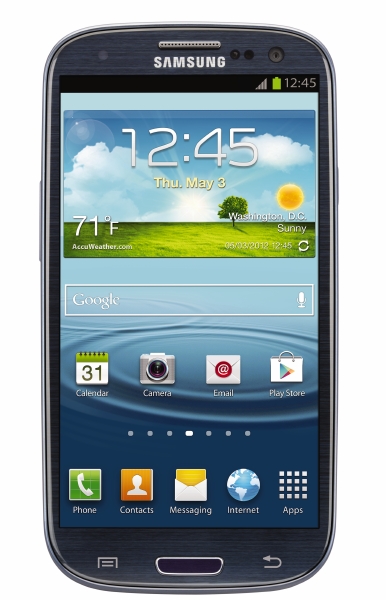

 Quote
Quote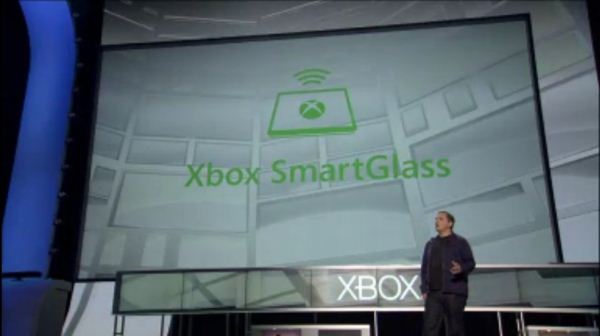
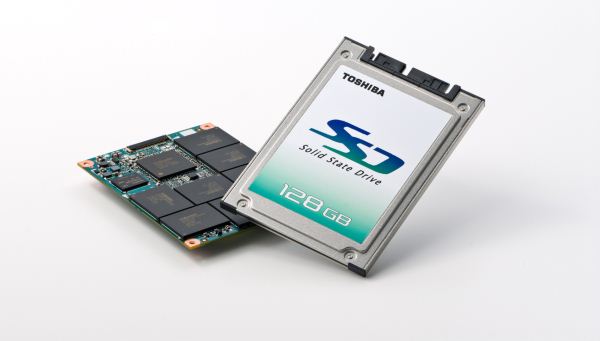
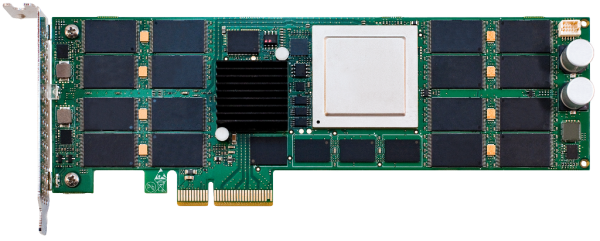
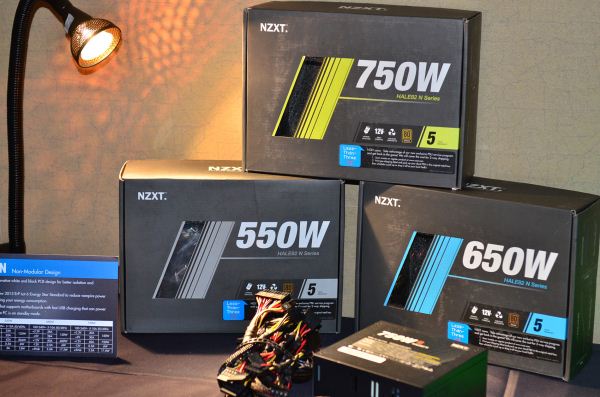


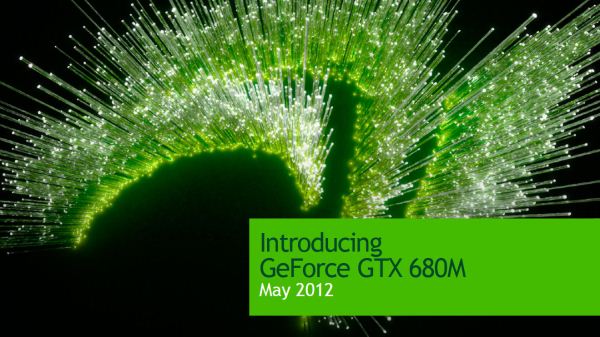
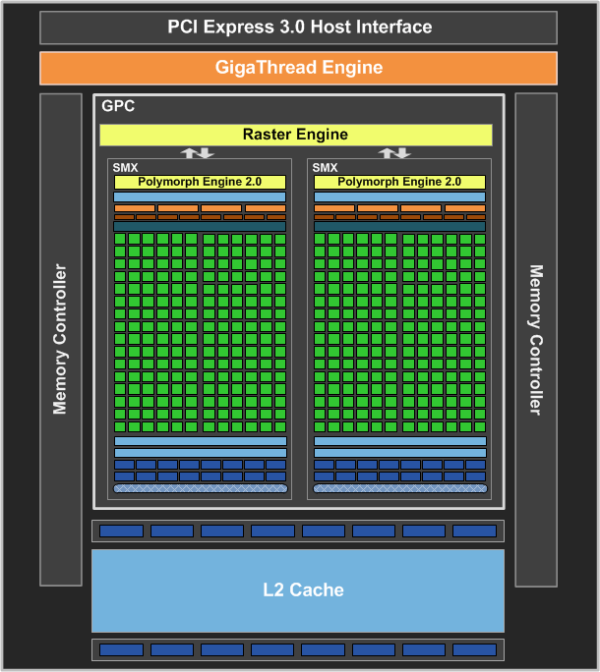
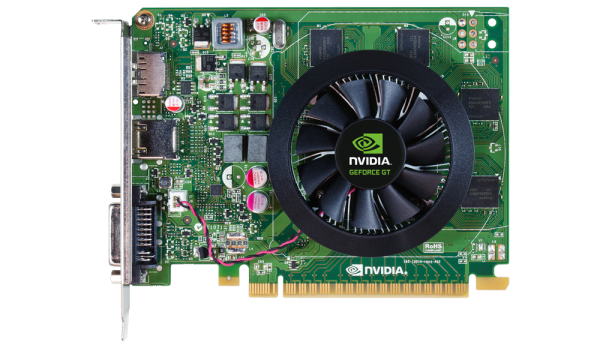
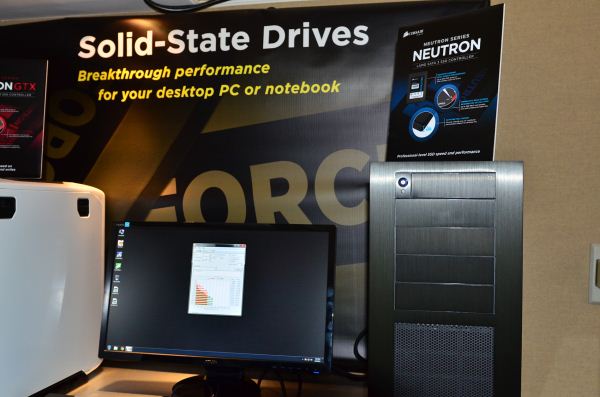
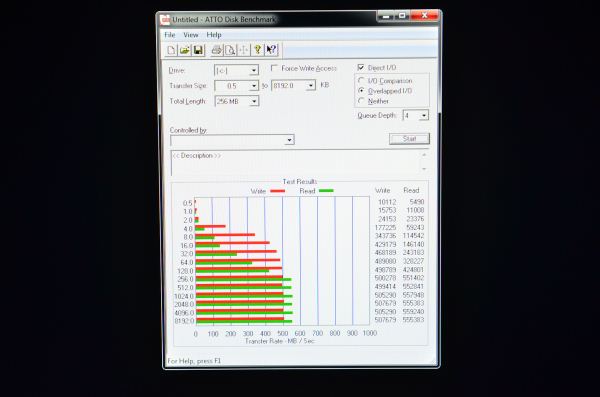
















Bookmarks